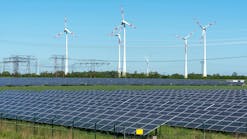Living near Boulder, Colorado, we enjoy more than 300 days of sunshine every year. That’s more than Miami or San Diego have. We have a south-facing two-story home with the roof positioned about optimally for panel arrays. Several of my neighbors have large arrays, and the colorful trucks and cars of solar install crews and salesmen are as plentiful as the neighborhood rabbits.
So, why don’t my wife, Char, and I go with the flow and get a great deal on a rooftop solar installation?
Well, I agree that rooftop solar is generally a good thing for a whole lot of reasons, but because of the following, I’m just not ready…yet.
1. Not Yet Economic…for me
Solar installation costs have fallen to less than $4/Watt and a few states have reached ‘grid parity’ — meaning that power from those panels costs the same as that provided by the local utility grid. As far as I can tell, Colorado, where I live, isn’t one of those states, even though we have plenty of sunshine. That’s because the economics depend so heavily on various tax and rate incentives, which vary from state to state. It’s not just a matter of cheap panels.
Panels are expected to drop to less than $2/Watt by 2020, and by 2017, Colorado will probably reach true grid parity, again assuming incentives stay the same. That’s only two years away — another reason to wait a bit before pulling the trigger.
2. Big Changes Coming
A major drawback to rooftop solar is that it produces peak power around noon, before it’s needed for afternoon system peak. Now California is incentivizing solar installers to turn the panels more towards the west/southwest. That practice (like everything else from the Golden State) will most likely spread eastward and impact installation design and credit from time-of-use (TOU) net metering.
Then there is the aesthetics issue — you know, part of the reason you bought your house in the first place? You can bet that after the present wave of buyers subsides, panel manufacturers will be offering designs that don’t have the visual impact (I’m being polite here) of what we see now.
And, speaking of the ugliness factor, I’d probably jump on the opportunity to install the new solar shingles that I saw at DOW’s demonstration home, if they were cheap enough. They or their competition will be available at an acceptable price some day, and I don’t want to be stuck with an obsolete unattractive technology.
I think I’ll wait and see what’s coming down the pike.
3. Unrealistic Lifetime Expectations
We bought a minivan when they first came out. It had all the features: electric doors, windows, you name it. But, 250 miles later, none of that stuff worked except the digital radio, which was stuck on a Japanese talk station. Although the engine ran just fine we couldn’t sell it and we finally gave it away
That’s what happens to all assets. They wear out, get obsolete. Solar panels are no different. Twenty-year lifetime? I don’t think so. And if you think you’ll keep them that long, imagine how they’ll look next to your neighbor’s new ones, designed to look and perform much better. If you can afford it, you’ll probably upgrade to save the value of your house, even if the panels are still working.
That’s why I hesitate getting into a long-term lease or any arrangement based on potentially unrealistic projected lifetime costs.
4. Social Un-Fairness
Solar installations are realistically available only to homeowners who are financially secure and have good credit. Even the incentives are designed for those with a decent level of income. For example, the federal tax credit of 30% is attractive only to those with the income to generate a tax liability high enough to take advantage of it.
Of course, the whole financing system can be gamed. If the home owner doesn’t have a high enough tax liability, third-party ownership of the installation can also take advantage of the tax credits and share some back to the home owner through a leasing arrangement. That’s part and parcel of offers by some installation companies.
But rooftop solar benefits aren’t available to renters, to low-income folks, the jobless or those trying to recover from joblessness. Nevertheless, these folks help to pay for the state, federal, local and any utility incentives going to the privileged rooftop solar owners.
That bothers me, and I'm not sure I want to be a part of all that. I’ll reconsider when unfair incentives go away.
5. Uncertain Utility Standby Arrangements
Many in the solar industry don’t think rooftop solar owners should pay their (fair) share of utility standby costs. Some of this vocal reluctance comes from ignorance of how a utility sets rates based on capital costs of infrastructure. Then there’s the elitist argument that the societal, ecological benefits and utility value of adding solar are so great that the residential solar owner shouldn’t pay any fixed charge whatsoever for a grid connection.
But, which many admit, the biggest heartburn is that adding an additional cost will make solar even more uneconomic, even with incentives.
An alternative for solar purists is to buy enough panels and battery storage to go completely off-grid. And maybe get some lanterns for those prolonged cloudy periods when the solar system batteries get low. That would be ideologically admirable, if economically dumb.
So, I’m uneasy about getting a free ride while someone else pays for my utility hook up. I’ll wait and see what shakes out.
Still, I have friends and colleagues who are strong renewable energy advocates. They argue that no matter what, going with solar is the noble way to go, because regardless of cost or other factors, by golly it helps lower greenhouse gases. And, they add, though it may not be economical yet, if enough folks buy it, the price will keep coming down, and we’ll learn how to use it better and more wisely.
Maybe so. What do you think?


